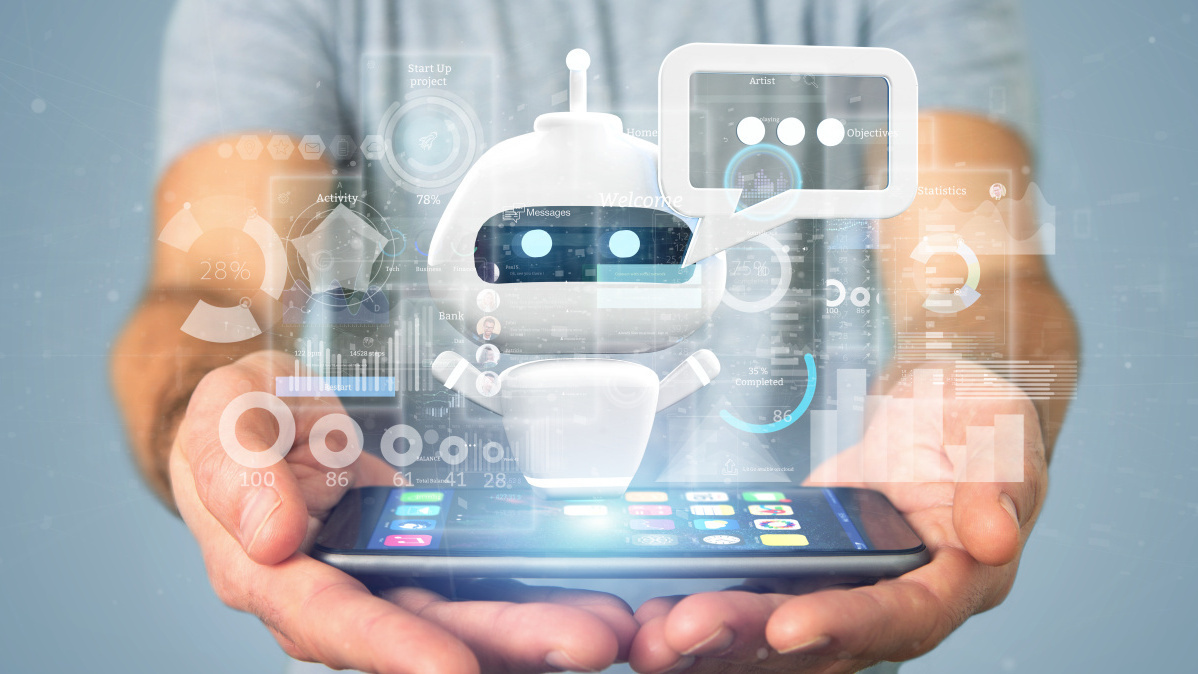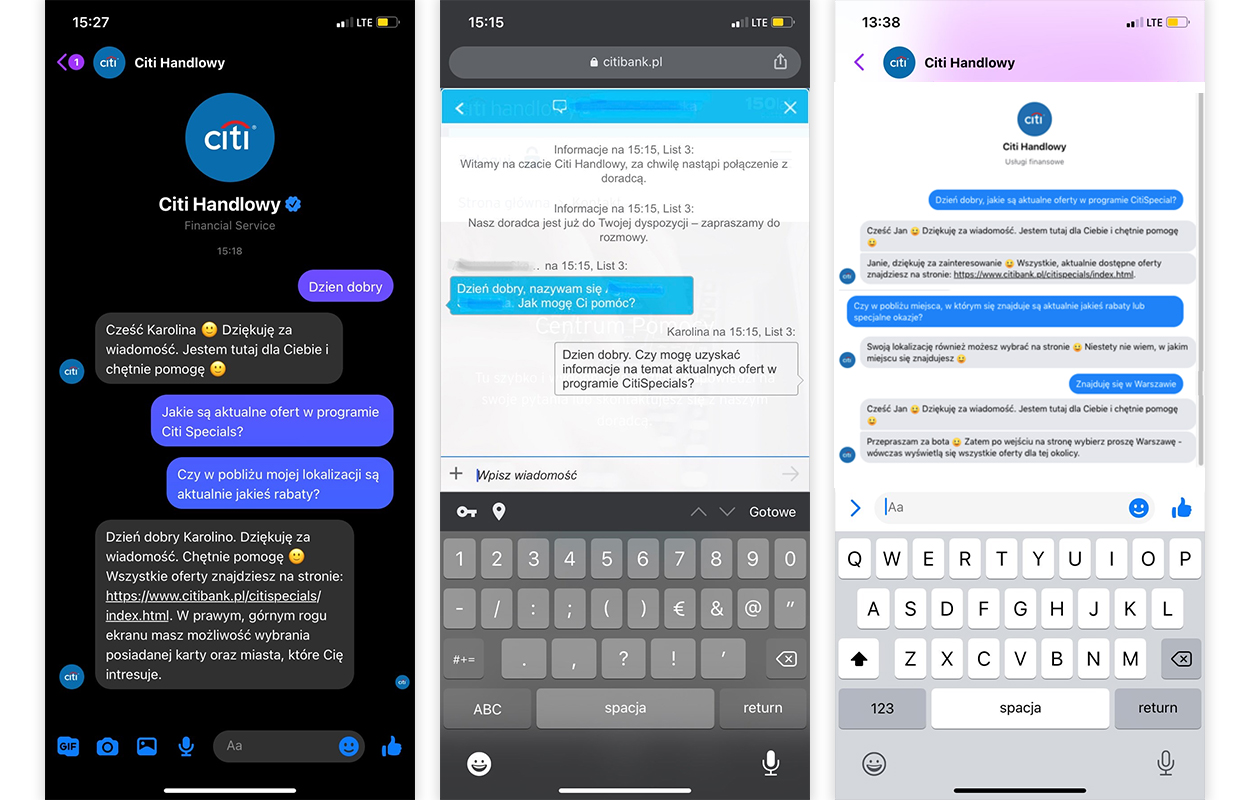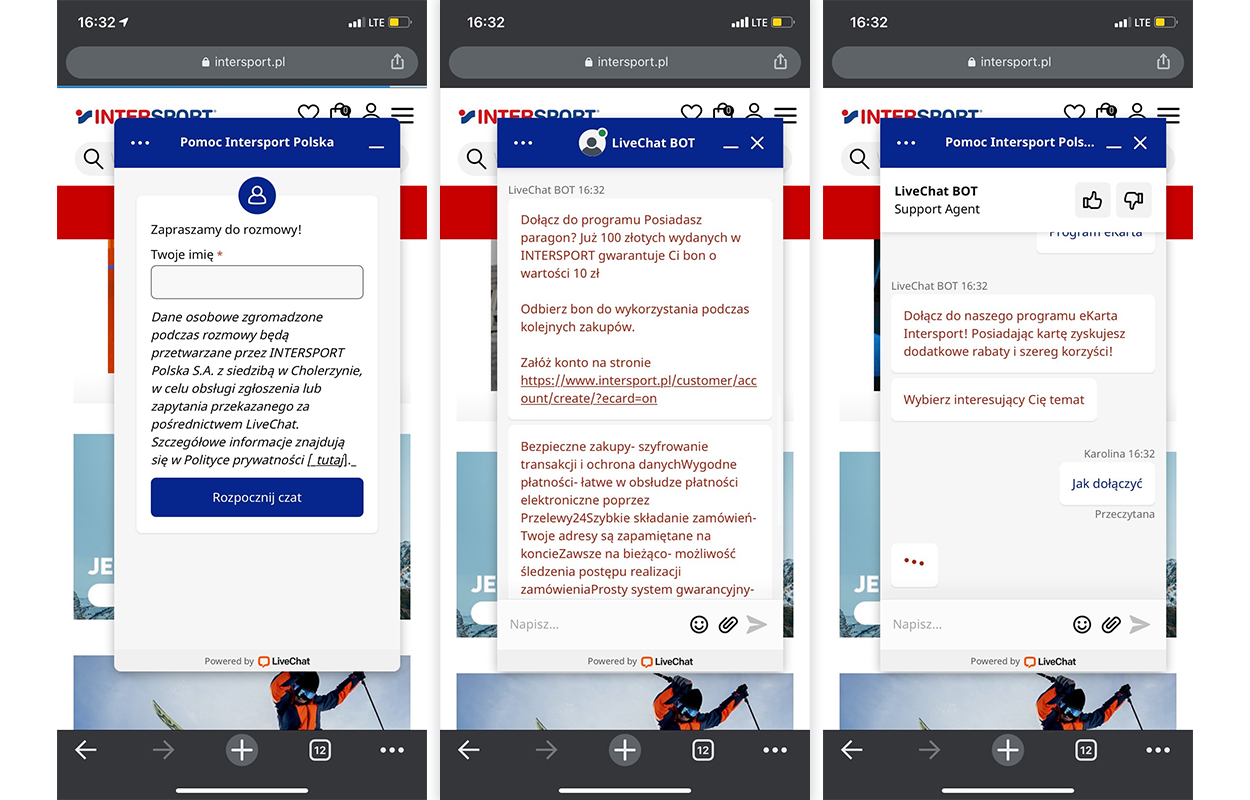I’m sorry for the chatbot – when AI gets out of control
Loyalty programs have become an essential component of a toolkit for building relationships with buyers, and they are currently used by almost every brand. Loyalty program operators put an emphasis on improving two-way communication with participants. There is one goal – to increase sales by acquiring as many new customers as possible and by increasing the value of the shopping cart. Quite recently, we could observe a new trend in loyalty programs, namely the implementation of chatbots.
An online conversational agent
A chatbot, or a virtual conversational agent, is software which enables two-way communication. Its task is to respond to questions in such a way as if the conversation was between two humans. To do that, chatbots use voice commands or text. Chatbots are a relatively simple form of artificial intelligence (AI) and are based on one of two methods: machine learning or a set of rules. The best known examples of using this technology can be found on Facebook Messenger and in virtual assistants such as Alexa.
The idea behind the implementation of chatbots was noble – it was to create a completely new way to interact with consumers, which would imitate the services provided by contact centre agents all over the world, but at near-zero cost of application. In principle, the modern system was supposed to make it possible to make bookings, order pizza or check the status of packages. The only limitation is the imagination of the chatbot developer.
As often happens and as was the case with chatbots, the lofty ideas sounded impressive in conference rooms in glass skyscrapers, and business cases showed huge savings by eliminating thousands of positions occupied by helpline workers.
A chatbot – a psychiatrist and schizophrenia – how did it all start?
In 1950, Alan Turing wrote an article entitled Computing Machinery and Intelligence. He claimed that a computer program could think and talk like a human being. To prove his theory, he conducted an experiment referred to as the imitation game, nowadays known as the Turing test. In the experiment, a designated person used a computer to talk to a human and a machine. The task was to distinguish between the conversation with the machine and the conversation with the human. According to Turing, a situation in which the respondent is unable to differentiate between the responses given by the computer and those given by the human would prove that the computer can simulate human language. Turing believed that machines would easily pass his test by 2020.

In 1966, Joseph Weizenbaum, a professor at MIT, developed a computer program called Eliza. It is believed to be the first chatbot in history. The program was based on simple keywords. The script enabled communication by matching the user’s questions to answers entered into the database. This ancestor of modern chatbots looked for keywords and asked further questions to encourage the user to continue the conversation. This system marked the beginning of development in the field of natural language processing.
The next step in advancing the pioneering technology was the development of the Parry program. In 1971, Kenneth Colby, a psychiatrist from the Stanford Artificial Intelligence Laboratory, wanted to go one step further and program a computer to understand brain function. Parry was a simulation of a person suffering from schizophrenia. The aim of this solution was to teach medical students. The beginning of a public debate on the possibilities of artificial intelligence was sparked by the fact that Parry was the first chatbot which passed the Turing test.
The key turning points in further development of the technology which is now referred to as chatbots were as follows:
- 1988 – Rollo Carpenter develops Jabberwacky, a program used to simulate human conversation.
- 1992 – Creative Labs develops software used for AI speech synthesis.
- 1995 – Richard Wallace develops NLP ELIZA, a chatbot whose aim was to have a natural conversation. Its source code was released as open source.
- 2001 – ActiveBuddy, the brand behind the SmartChild conversational interfaces, develops a smart chatbot based on AOL Instant Messenger. It was the forerunner of Siri by Apple.
- 2010 – Apple launches Siri – the first intelligent virtual assistant in the world.
- 2012 – Google Now is launched.
- 2014 – Microsoft launches Cortana and Amazon launches Alexa.
- 2016 – Facebook enables the use of chatbots on Messenger.
Use of this technology
Customers eagerly use the help of chatbots, but it is natural that since the technology is developing, expectations for chatbots have risen significantly over the years. The very fact of being served by artificial intelligence is no obstacle in the emotional sphere. The only thing that matters is for the customer to quickly get a satisfactory answer to their question.
Chatbots are particularly popular among the members of the younger generation, who prefer to solve their problems on their own, with the help of an intelligent assistant. This is why a growing number of companies, including market leaders, are implementing chatbots as the main strategy in customer service. In a survey, 60% of millennials said that they had used a chatbot. Over 70% admit that they had a positive experience with using virtual assistants.
When it comes to business, the most important advantages of implementing chatbots include: reducing the number of enquiries in phone calls, chats and e-mails by 70%, and improving the speed of processing complaints in 90% of surveyed companies.
Social media has significantly affected communication between people, i.e. the frequency and duration of interactions. Consumers’ changed communication habits translate into new ways of reaching companies. It has become a real challenge for brands, and chatbots are supposed to face this. Over half of consumers prefer to contact a company via an application to solve a problem. Business owners should also consider the fact that Facebook is still the most popular social media platform. Chatbots have already become a permanent element of communication with customers, even though brands are still learning how to use them.
Analyses of the American market show that:
- 73% of administrative tasks in health care can be automated by artificial intelligence.
- by 2023, chatbots will allow the banking, healthcare and retail trade sectors to save up to 11 billion dollars a year.
A chatbot – how does it work?
As I have already mentioned in the introduction, to put it simply, chatbots can be rule-based or rely on machine learning. Rule-based chatbots are simpler and, as a result, have limited capabilities. They rely on a set of commands prepared in advance and the chatbot asks the user to give them. Usually, during the ‘conversation’ the chatbot asks a question with a specific set of answers. For example, a chatbot responsible for taking pizza orders asks: Which size of pizza would you like: small, medium or large? If you give an answer different than ‘small’, ‘medium’ or ‘large’, for example you write ‘enough for 4 adults’, the chatbot will not understand what you expect and will go back to its original question or redirect the conversation to a living 
Chatbots that use machine learning are based on a neural network, which is a set of algorithms that try to recognise interdependencies between datasets. As the name suggests, these networks are based on neurons, which can adapt to changes in input data, so the whole network aims to generate the best possible results without the need to change the structure of the designed exit criteria for the process. The concept of neural networks draws from the roots of artificial intelligence. Chatbots which operate in this model learn through exposure to new words and dialogues which have not been entered into their dictionary beforehand.
Practical application of chatbots in loyalty programs
What present-day consumers value the most is saving time. This factor significantly affects their manner of communication, including interactions with brands. Despite the fact that the preferred form of acquiring information and learning is through videos, when it comes to direct communication between the consumer and the brand, there is a tendency to depart from phone calls and choose text-based forms of contact instead. The customer wants to get an answer to their question as quickly as possible, so they have no time or inclination to wait half a day on the helpline. My private experience from last week is that when I tried to contact a helpline for a new highway e-toll system, I was told that 99 people were waiting on hold ahead of me, which reinforces my belief that the above-mentioned hypothesis may be correct. This leads to the thought (which is right in theory) that the perfect solution would be to implement a chatbot, which is available for the user round the clock and can simultaneously handle an unlimited number of conversations. Still another advantage is the fact that the customer immediately gets an answer to their question.
In loyalty programs, a conversational agent can explain how to join a program, redirect the user to the terms and conditions, share information on the user’s point balance or inform the user about available rewards. Thanks to this possibility, the customer no longer needs to browse the website to look for important content.
We may conclude that in this case, a human cannot compete with artificial intelligence. A human agent is limited by time, whereas a chatbot is available round the clock, regardless of the date or hour. An agent’s productivity decreases as the caffeine level in their blood falls, whereas a chatbot does not care about such things at all. Moreover, a chatbot can handle an unlimited number of conversations, as opposed to an agent, who can only help one person at a time. Moreover, we cannot forget about the financial aspect, which also speaks for state-of-the-art technology.
It turns out that using a chatbot is beneficial not only for consumers, but also for companies. Using a chatbot gives companies a lot of important information on consumers. A brand may acquire data on shopping activity, products searched for the most often and the most popular rewards. Such analyses allow the operator to modify the loyalty program to match the expectations of a specific consumer. After all, the possibility of personalisation and an individual approach are the main features valued by consumers. Due to the introduction of important changes, the loyalty program will be even more attractive to a potential participant.
Analysis of chatbots on the Polish market
Analyses have led to two main conclusions. A growing number of companies are using chatbots on their websites. This is caused by the fact that the majority of consumers prefer to contact a virtual assistant. Research shows that in 2022, up to 90% of enquiries will be handled by bots.
Brands use three types of conversational agents:
– automatic chatbot – a solution based solely on automatic answers; sometimes it is possible for an agent to take over the conversation
– Facebook Messenger – in some cases connected with a chatbot on the company’s website
– virtual agent – (living) agents handling dedicated conversations in chats on the website or in a messenger.
As time passes, a growing number of loyalty program operators are implementing chatbots on the websites of their loyalty programs. Particular attention should be paid to Yves Rocher, which makes it possible to join the loyalty program by choosing an option while talking to the chatbot.
A summary of how this technology is applied by brands which make use of chatbots in their loyalty programs is as follows:
Results of conversations about loyalty programs with chatbots
Bank City Handlowy
In 2018, Citi implemented its chatbot based on Facebook Messenger. It appears from the information available that the chatbot uses geolocation, which is supposed to enable it to point to discounts offered as close as possible to the consumer’s location. During our test conversation, we did not manage to obtain essential information. In this situation, the chatbot redirects the consumer to the bank’s website, where they can look for current offers. On the bank’s website, you can contact a real (living) assistant, who immediately gives you an answer. When we talked to the Citibank agent, we heard the title phrase ‘I’m sorry for the chatbot’, because we had not managed to obtain the expected information and the conversation had been stuck on a loop.
Bank Credit Agricole
The bank makes it possible to use a chatbot available on the website, without having to log into the account. Unfortunately, the chatbot could not answer grammatically correct questions. It only gave us the required information after we entered keywords. Despite several attempts, we did not get any information on the loyalty program.
H&M
The retail chain offers chatbot services on its website. As expected of a chatbot, it is available round the clock. It is not necessary to log into your account to start a conversation. The programmed chatbot immediately answers the question and shares links which may make it easier for the consumer to find the answer to their question. The chatbot efficiently gives information on the manner of joining the club (it immediately sends the registration link to the consumer and presents the benefits of being a member). Moreover, we had a chance to learn about current special offers for members. However, the robot could not answer the question about the validity period of points or data available on the member’s account. When asked about the number of points or the nearest H&M store, the chatbot sent us a link where we could find the information we were looking for.
CCC
The brand offers one of the most advanced chatbots in the Polish market, which has a visual search option (searching products by image). In order to talk to the conversational agent, the consumer needs to visit the website of the brand. It is not necessary to log into your account. The robot is very well programmed and has no difficulties with answering complex questions. The robot was capable of informing us how to join CCC club. It also gave us information on the benefits of being a member and the validity of points. It precisely described the reward system and membership levels. We did not get an answer on account validity, the current customer status and the number of points collected. When we asked about current special offers, we got a redirect link. Moreover, the robot used geolocation to search for the nearest CCC stores.
Intersport
The chatbot is available directly on the website. To start a conversation, the consumer needs to choose the topic they are interested in. The menu has an item which refers to the loyalty program. When it is chosen, you can get general information on the program, the manner of joining the club and logging into the account, as well as current special offers.
Answear and 5.10.15

Both brands offer one of the best developed chatbots, which is available on their websites. It seems that they have implemented the same solution. Whenever a question is asked, the robot suggests issues which it can solve. The robot can answer questions on the loyalty program, such as: How can I join the club? How can I use my points? What is the validity period of my points?

Biedronka and Komputronik
Chatbots are available in Facebook Messenger. They quickly answer questions available in the menu (mainly questions about current special offers). They are not good at answering custom questions asked by the user. When you enter the name of the brand’s club, the robot informs you how to join it. But this is where information on loyalty programs ends. The chatbot also informs you that if the answer is not satisfactory, it can immediately redirect you to a moderator.


Carrefour and Media Markt
These chain stores offer a Facebook messenger chatbot which only recognises commands chosen from the menu. When you ask a question you came up with, the robot can redirect you to talk to a representative. Unfortunately, the menu does not mention the loyalty program and when you ask a question about the program, the robot wants to redirect you to a representative. The chatbot can show you current special offers at the nearest store, but you need to enter your postcode.


Yves Rocher
The chatbot is available in Facebook Messenger and on the brand’s website. An advantage is the fact that it is the only chatbot which has a question about the loyalty program in the menu. It is also possible to join the program and generate a club card by talking to the robot. During the conversation, you can find out about individual offers for club members, the current account status and the nearest store. The chatbot can also display your virtual card during the conversation. Unfortunately, the chatbot can only answer questions available in the menu.


Rossmann
A chatbot is available directly on the website of the store. The chatbot’s menu has the majority of issues that could be raised by a customer. When you enter the phrase ‘loyalty program’, the robot only gives you information on how you can join Rossmann Club. Unfortunately, it cannot tell you the current number of points or the validity of your account. However, thanks to geolocation, it can show you the nearest store and current special offers.

Superpharm
The store chain offers a chatbot available on its website. The customer chooses an issue area – LifeStyle Program or Superpharm Drugstore. The functions of the robot are limited. Questions are left unanswered. A long time needs to pass before a representative steps in.

Ikea
In June 2020, IKEA announced the launch of a second-generation chatbot, the first one in Poland. When you ask a question on the loyalty program, the robot can help you with the following issues: ‘How can I join Ikea Family?’, ‘How can I get the Ikea Family card?’ and ‘What should I do when I lose the club card?’. The robot could not tell us the current number of points, it only showed us where we could check it.

Acknowledgments
It would be impossible to write this text without invaluable help from the Team that faced the challenging task of talking to chatbots 
Summary
An analysis of chatbots offered by the operators of loyalty programs on the Polish market has shown that we have a lot to catch up with in this regard. Solutions are based mainly on sets of rules, not on machine learning. As a result, consumers surely give up talking to chatbots quite quickly when a phrase they enter again and again remains unanswered. In the majority of cases, questions on loyalty programs required the assistance of a representative.
The potential of chatbots is not fully used. This mechanism could make it easier for users to acquire information on their status in the program, the number of points they have collected or the rewards they have won. From the operator’s point of view, it would shorten the time agents spend on simple enquiries, which take up most of their time.
Without a doubt, the leaders are Yves Rocher and CCC. Their chatbots stand out in a good way due to their capabilities.
1








La tecnología es muy útil, pero sabiendo encaminarla, por un buen camino, de otra forma el mal uso podría alterar el pensamiento humano en todos los ámbitos.